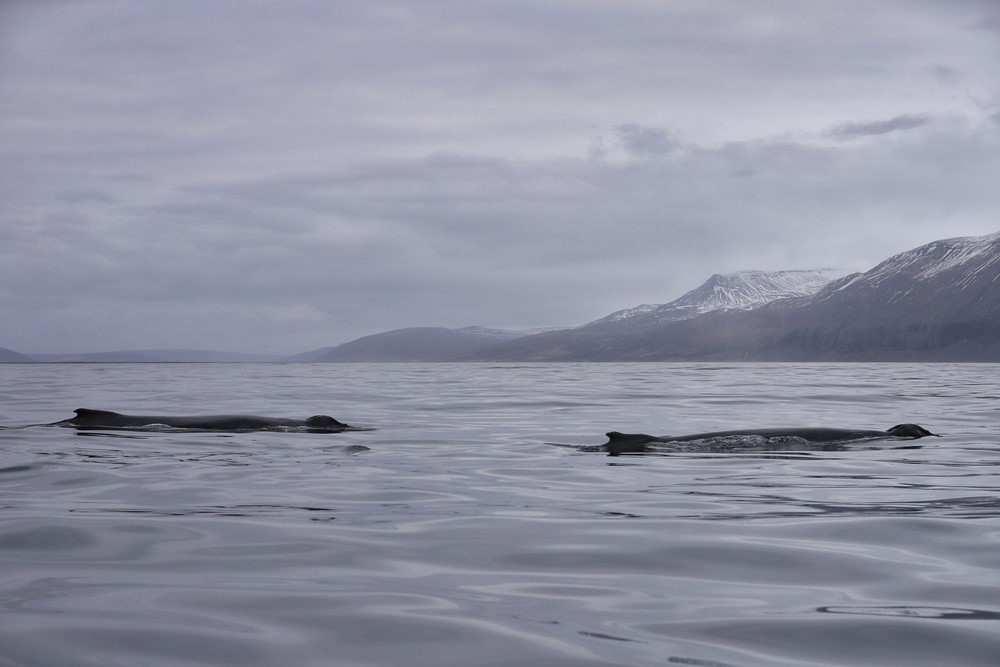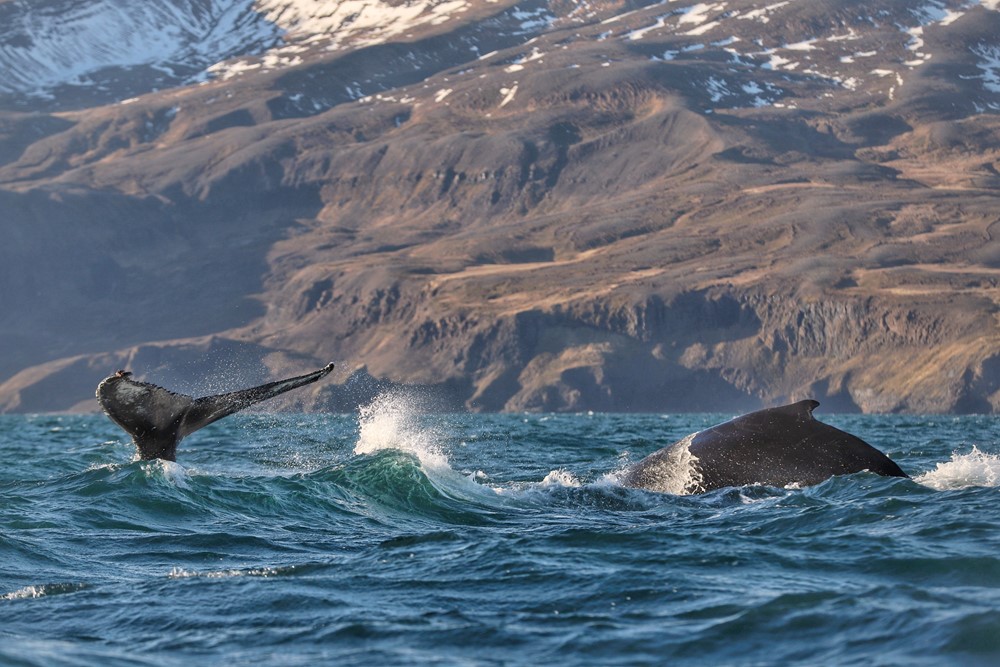SOCIAL TRAVELLERS

Humpback whales are generally considered solitary animals as they spend most of their lives on their own. However, they're known to be social animals regardless, which is why - with a bit of luck - one might see two or more individuals together.
When it comes to Skjálfandi Bay, we get to see such behaviour especially towards the end of the feeding season when it's soon time for these magnificent animals to leave these nutrient rich waters behind and migrate south into warmer, sub-tropical or tropical waters, for the mating and calving season.
During that time, we oftenly see two or three individuals surface and dive side by side, sometimes even four or five.
Humpbacks are known to migrate in large numbers at times and in several occasions, superpods of over a hundred animals have been sighted. More commonly though they can be seen swimming in pairs, usually a male and a female travelling together, a behaviour likely happening for protection.
In their breeding grounds in the warm waters, males congregate and form larger groups as they compete for the females, a so-called "competition pod".
At the same time pregnant females might group up to defend themselves and later on the newborn calves from aggressive males that are trying to mate.
Also in the breeding grounds it is likely to see a male escorting a female with her calf, seeking attention of the mother, but protecting the two at the same time. Such an escort or so-called mate-guard is likely to be a younger male and it might stay with the mother and calf for quite a while, at times even into their migration back north some months later.
The only true bond among humpback whales however is the one of mother and calf which usually lasts for about a year and only as the two reach their feeding grounds, they will eventually split up and follow their own paths.
- Sarah


